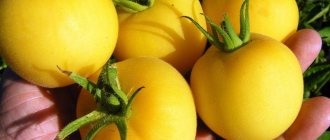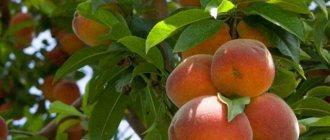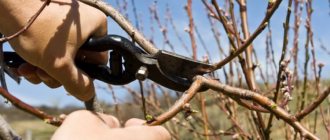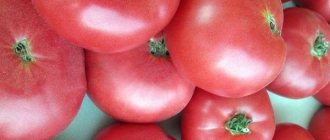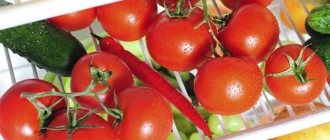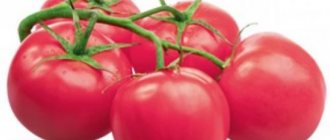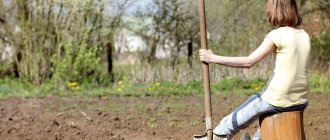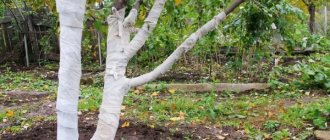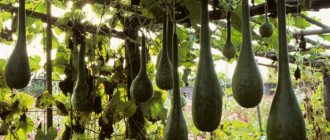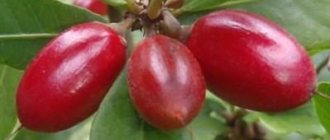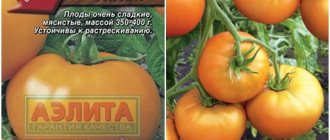Varietal characteristics of wood
The variety got its name thanks to the Donetsk Experimental Station, where it was bred by Liliya Taranenko and other breeders in 1960. Now it is called the Bakhmutov Research Station, and the variety is still propagated at its base for planting in the south of Ukraine and Russia (in the Rostov region).
The variety has the following description:
- fairly tall trees;
- the crown is dense, spherical;
- winter-hardy,
- mid-season;
- begins to bear fruit 3 years after planting;
- the leaves are large, lanceolate, dark green;
- The flowers are lush, rich pink and crimson.
Thanks to its beautiful flowering, the Donetsk yellow peach is often planted to decorate the garden, like other varieties of the crop. The taste of the fruit is also high:
- in size – medium or large;
- the skin is slightly pubescent, yellow, with a red spot;
- the pulp is yellow, juicy, sweet with slight sourness and a pleasant aroma;
- suitable for use in any form.
Comparative characteristics of the best early and late varieties of peaches
Peach belongs to the Pink family. The peach tree differs from other fruit crops in its very intensive growth. This is a short-lived, early-fruiting crop. If previously it was generally accepted that the peach tree could only be grown in the southern regions, now breeders have managed to develop frost-resistant hybrids. Such hybrids can even tolerate severe frosts down to -28 degrees. Thanks to this, peach can be planted in almost any latitude of Russia.
Varieties of peaches differ in such characteristics as flowering, fruit ripening period, frost resistance and fruiting. In addition to the climatic conditions where they grow, tree care also plays a big role in the formation of the harvest. Any variety of peaches can be grown in greenhouses. There are two types of varieties: early and late. The fruits of the early species begin to ripen in July, and the later ones - at the end of August and until the beginning of September. There are varieties that can be harvested in October.
Winter-hardy peach varieties are highly valued in central Russia, since frosts here can reach -30 degrees. Not every variety can survive such cold winters.
When choosing winter-hardy varieties, you can pay attention to varieties of Polish , American or Canadian selection.
The best winter-hardy peach varieties:
This species was bred by American breeders. Tolerates frosty winters well. In addition, it is resistant to frizz. Perfectly adapted to growing conditions in the Russian climate. The fruits are juicy and tasty and ripen quite early. The color of the fruit is yellow-orange with red spots, the weight of one fruit is 150 g. The height of the Redhaven tree reaches eight meters. If you do not follow the necessary rules of agricultural technology, the tree may be affected by various fungal diseases.
In addition to the fact that the Collins hybrid is winter-hardy, it is also distinguished by its abundant harvest. The fruits are very large, have a sweet and sour taste, and are juicy. The ripening of the crop occurs gradually; it can be collected in parts. It is characterized by resistance to diseases such as powdery mildew and curl. It is excellent to withstand both spring and winter frosts. It must be constantly watered, pruned, and organic and mineral fertilizers applied.
Kyiv peach is frost-resistant and early. As the fruits ripen, they acquire a rich yellow or light yellow hue with pink spots. The “Kiev Early” species does not tolerate excess humidity. Characterized by high resistance to pests and diseases.
Peach Kremlevsky is an early and frost-resistant hybrid. Adapts perfectly to any moderate climatic conditions. As the fruits ripen, they become yellow or orange with red spots. Another advantage of this Kremlevsky hybrid is its resistance to various diseases and insects.
"Cardinal" is a frost-resistant peach, but it is not able to withstand very low temperatures. "Cardinal" needs extra care. It must be constantly watered, fertilized and pruned to form a crown.
Early types of peaches begin to ripen in mid-June - mid-July.
The most popular early peach varieties:
Early, winter-hardy peach. The fruits have excellent taste characteristics. The weight of one fruit ranges from 80 to 125 grams. As the peaches ripen, they turn yellow with small pink spots. The pulp is very tender and juicy, but does not easily separate from the stone.
The “Favorita Marettini” variety is distinguished by its high yield. Depending on the growing region, the weight of the fruit can vary from 80 grams or more. The fruits are round in shape, burgundy in color. The pulp is very juicy, white-green in color, and does not separate well from the seed.
Characterized by high yield and resistance to frost. The disadvantage of this species is its low resistance to drought. The fruits are quite large, can reach a weight of up to 120 grams, and are juicy. The skin is yellow with a slight burgundy blush, dense, highly pubescent. The pulp is very difficult to separate from the stone.
This variety was grown in the Nikitinsky Botanical Garden in 1934. Characterized by rich productivity. Ripe peaches, as a rule, can reach a weight of up to 110 grams. The skin is thin, tender, greenish-cream in color. There are red stripes on the surface of the skin. The pulp is quite juicy in taste and fibrous.
It is quite problematic to grow hybrids belonging to early varieties on the territory of Russia. The most suitable varieties for the climatic conditions of Russia will be varieties with a medium ripening period. This is the beginning of July - the end of August. The best varieties:
One of the most popular hybrids belonging to the mid-early ripening period. Like “Fluffy Early”, it was bred in the Nikitinsky Botanical Garden. The fruits are quite large, about 100-200 grams, wide-oval in shape. The peel is yellow-orange in color, with bright red spots. It is characterized by dense and fleshy fruit pulp with a sweet and sour taste. The stone is not very large and easily falls away from the pulp.
The main distinguishing feature from all other varieties is that this hybrid has a ripe white peach. There is also a slight pink blush on the skin. The fruits are characterized by a round shape with a shallow “seam”. The weight of each fruit is from 90 to 140 grams. The flesh of ripe peaches is not colored, translucent, and practically does not separate from the stone. Quite sweet and juicy. Depending on the region of growth, there may be a slight sourness. Due to the fact that the fruits are very soft, they are difficult to transport, so it is unlikely that you will be able to find “Donetsk White” on the market. Suitable only for growing on a personal plot.
Variety varieties
There are two types of Donetsk peach:
- yellow Donetsk;
- white Donetsk.
Both varieties are not very different from each other. They are frost-resistant, mid-season, and produce a fairly rich harvest of fruit. However, the fruits of the white Donetsk are smaller, their maximum weight is 130 grams. The flesh is white, slightly translucent, and the seed has visible dark veins. Also, this variety can bear fruit later than the yellow one - for 4 years.
How to plant peach seedlings
Any beginner can grow a peach if he puts enough effort into it. Choose a suitable place - it should definitely not be damp, swampy lowlands. The best choice is a sunny area protected from the wind with fertile soil. Do not plant peach closer than 3 m from other plants.
Use humus to fertilize the soil. The best dimensions for a planting hole are 50x50x50 centimeters. After planting, do not forget to water the seedling and also mulch with manure.
"Becker" wishes you abundant, healthy harvests!
Pros and cons of Donetsk peach
This variety has a number of advantages:
- beautiful appearance;
- cold-resistant;
- even after severe cold and freezing it quickly recovers;
- does not require pollinators;
- large, tasty peaches;
- from one tree you can harvest up to 60 kilograms of crop;
- unripe fruits are easy to transport.
However, there are some disadvantages that may prevent you from getting a good harvest:
- poor transportability of ripe peaches;
- the variety is susceptible to powdery mildew and curl;
- prevention from other diseases and pests is also necessary;
- does not tolerate drought.
See also
Description and characteristics of the TOP 20 best varieties of nectarine, pros and consRead
Also, one of the unusual features of the variety is that its fruits ripen unevenly. Each can contain both ripe and still ripening pulp.
Comparative characteristics of the best early and late varieties of peaches
Peach belongs to the Pink family.
The peach tree differs from other fruit crops in its very intensive growth. This is a short-lived, early-fruiting crop. If previously it was generally accepted that the peach tree could only be grown in the southern regions, now breeders have managed to develop frost-resistant hybrids. Such hybrids can even tolerate severe frosts down to -28 degrees. Thanks to this, peach can be planted in almost any latitude of Russia. Varieties of peaches differ in such characteristics as flowering, fruit ripening period, frost resistance and fruiting. In addition to the climatic conditions where they grow, tree care also plays a big role in the formation of the harvest. Any variety of peaches can be grown in greenhouses. There are two types of varieties: early and late. The fruits of the early species begin to ripen in July, and the later ones - at the end of August and until the beginning of September. There are varieties that can be harvested in October.
Winter-hardy peach varieties are highly valued in central Russia, since frosts here can reach -30 degrees. Not every variety can survive such cold winters.
When choosing winter-hardy varieties, you can pay attention to varieties of Polish , American or Canadian selection.
The best winter-hardy peach varieties:
This species was bred by American breeders. Tolerates frosty winters well. In addition, it is resistant to frizz. Perfectly adapted to growing conditions in the Russian climate. The fruits are juicy and tasty and ripen quite early. The color of the fruit is yellow-orange with red spots, the weight of one fruit is 150 g. The height of the Redhaven tree reaches eight meters. If you do not follow the necessary rules of agricultural technology, the tree may be affected by various fungal diseases.
In addition to the fact that the Collins hybrid is winter-hardy, it is also distinguished by its abundant harvest. The fruits are very large, have a sweet and sour taste, and are juicy. The ripening of the crop occurs gradually; it can be collected in parts. It is characterized by resistance to diseases such as powdery mildew and curl. It is excellent to withstand both spring and winter frosts. It must be constantly watered, pruned, and organic and mineral fertilizers applied.
- "Kyiv early".
Kyiv peach is frost-resistant and early. As the fruits ripen, they acquire a rich yellow or light yellow hue with pink spots. The “Kiev Early” species does not tolerate excess humidity. Characterized by high resistance to pests and diseases.
Peach Kremlevsky is an early and frost-resistant hybrid. Adapts perfectly to any moderate climatic conditions. As the fruits ripen, they become yellow or orange with red spots. Another advantage of this Kremlevsky hybrid is its resistance to various diseases and insects.
"Cardinal" is a frost-resistant peach, but it is not able to withstand very low temperatures. "Cardinal" needs extra care. It must be constantly watered, fertilized and pruned to form a crown.
Early types of peaches begin to ripen in mid-June - mid-July.
The most popular early peach varieties:
Early, winter-hardy peach. The fruits have excellent taste characteristics. The weight of one fruit ranges from 80 to 125 grams. As the peaches ripen, they turn yellow with small pink spots. The pulp is very tender and juicy, but does not easily separate from the stone.
- "Marettini's Favorite"
The “Favorita Marettini” variety is distinguished by its high yield. Depending on the growing region, the weight of the fruit can vary from 80 grams or more. The fruits are round in shape, burgundy in color. The pulp is very juicy, white-green in color, and does not separate well from the seed.
Characterized by high yield and resistance to frost. The disadvantage of this species is its low resistance to drought. The fruits are quite large, can reach a weight of up to 120 grams, and are juicy. The skin is yellow with a slight burgundy blush, dense, highly pubescent. The pulp is very difficult to separate from the stone.
- "Fluffy early."
This variety was grown in the Nikitinsky Botanical Garden in 1934. Characterized by rich productivity. Ripe peaches, as a rule, can reach a weight of up to 110 grams. The skin is thin, tender, greenish-cream in color. There are red stripes on the surface of the skin. The pulp is quite juicy in taste and fibrous.
It is quite problematic to grow hybrids belonging to early varieties on the territory of Russia. The most suitable varieties for the climatic conditions of Russia will be varieties with a medium ripening period. This is the beginning of July - the end of August. The best varieties:
One of the most popular hybrids belonging to the mid-early ripening period. Like “Fluffy Early”, it was bred in the Nikitinsky Botanical Garden. The fruits are quite large, about 100-200 grams, wide-oval in shape. The peel is yellow-orange in color, with bright red spots. It is characterized by dense and fleshy fruit pulp with a sweet and sour taste. The stone is not very large and easily falls away from the pulp.
- "Donetsk White".
The main distinguishing feature from all other varieties is that this hybrid has a ripe white peach. There is also a slight pink blush on the skin. The fruits are characterized by a round shape with a shallow “seam”. The weight of each fruit is from 90 to 140 grams. The flesh of ripe peaches is not colored, translucent, and practically does not separate from the stone. Quite sweet and juicy. Depending on the region of growth, there may be a slight sourness. Due to the fact that the fruits are very soft, they are difficult to transport, so it is unlikely that you will be able to find “Donetsk White” on the market. Suitable only for growing on a personal plot.
Specifics of growing a tree
Planting Donetsk yellow peach has many features. Without their knowledge, it is difficult to achieve a bountiful harvest.
Boarding time
When choosing the time and place of planting, you need to keep in mind that the Donetsk yellow peach still does not tolerate temperatures dropping to -20 degrees.
Therefore, it is suitable for regions with mild winters.
Planting dates are determined as follows:
- In cold climates, plant in spring.
- In warm places it is possible in the fall, when the temperature has already reached +10, and the sap flow has stopped.
A peach cannot be harvested after strawberries, alfalfa, melons and nightshades.
Purchasing seedlings
In order for the tree to take root well, the seedlings must be healthy and strong:
- It is not allowed for parts of the roots to be dried out or rotten.
- Greenish bark.
- The grafting site is smooth, without damage.
- The ideal age of a seedling is 1 year.
After purchasing, dip the peach roots in water with a growth stimulator.
Preparing the seat
Planting technology directly depends on the time of year. For spring, the seating area has been prepared since the fall:
- Dig a hole half a meter deep and 70 centimeters wide.
- Secure the support in the middle.
- Mix the removed layer of soil with 7 kilograms of humus, rotted manure or compost, also add 300 grams of ash and 50 grams of potassium chloride and superphosphate.
- Pour the entire mixture in the form of a mound into the hole.
If the soil is fertile enough, organic matter can be excluded. The same applies to planting in the fall. In this case, the hole is dug out 2-3 weeks before the expected date and fertilized.
Disembarkation scheme and process
Planting peach seedlings does not require complicated activities. It is carried out using the following technology:
- Place the seedling on a mound of soil and fertilizer and distribute the roots evenly.
- Cover with soil, making sure that the grafting site is outside.
- Compact and make a small ditch around the perimeter of the hole.
- Add 30 liters of water.
- When the water is absorbed, tie the tree to a support.
- Mulch with a layer of manure 10 centimeters thick. However, the fertilizer should not touch the plant itself.
Landing Features
Proper planting is one of the main requirements in obtaining a healthy tree and, as a result, a rich harvest, and therefore you should carefully adhere to its basic rules.
Optimal timing
Planting peaches, depending on the climatic and weather conditions of the region, can be carried out in spring or autumn. Each season has its own advantages. Thus, planting in spring is most suitable for areas with cold and temperate climates , at a time when the soil has already thawed, but the buds have not yet swelled (usually the end of March - beginning of April) - this will allow young trees to take root and easily endure the winter cold.
Autumn planting is more suitable for southern regions , which are characterized by long autumns and warm winters - in this case, planting is carried out before the onset of cold weather and will allow the soil to become compacted during the cold season, and the roots that have managed to germinate will be given the opportunity to develop without any deviations, properly feeding the trunk , branches and buds. With the onset of spring, such a tree will begin to actively develop and grow.
Choosing a suitable location
When choosing a place to plant a peach, you should take into account that this is a heat-loving plant that can actively develop only if there is sufficient natural light.
Therefore, the place should be open, sunny, without shading from fences or old trees.
Also, the site should be free from drafts and windiness. The most suitable place would be a small hill or slope that would protect the tree from northern winds and also eliminate the possibility of close groundwater.
Selection and preparation of planting material
Both saplings and seedlings are considered as planting material for peaches:
- Seedlings - an economical option for growing your own peach. In order to grow it, 2-3 of the strongest and most mature fruits are selected, the seeds are removed from them, which should be washed and dried well. Next, the seed material is immersed in wet sand or sawdust until germination (about 2–2.5 months). You can speed up the process - for this, after 30–40 days, the seed is carefully removed from the substrate and sown in the ground (the optimal period for this procedure is early spring, after the soil has warmed up).
If two or more peaches are planted, the distance between them should be at least 25 cm. It is permissible to sow planting material in the ground in the fall (in October-November, before the first frost) - if they overwinter in the soil, the seedlings will require shelter.
- Seedlings - an already developed and grafted young tree is purchased. For planting, one- or two-year-old plants are selected, the height of which should not exceed 1.5 m, and the number of branches - 2-4 pieces. The root and above-ground parts of the seedling should not be dry, show signs of rotten formations or any other damage.
After purchasing, the roots of the seedlings are wrapped in wet gauze and a plastic bag on top - this will protect the fragile plant from injury during transportation, as well as from the negative effects of temperature changes and humidity levels. After the seedling is delivered to the site, it should not be immediately unrolled - it is better to leave it in this form for 3-4 days, after first removing small shoots that require moisture.
Many experienced gardeners purchase seedlings in the autumn, since it is at this time that a wide selection of planting material and more reasonable prices are available. The question arises: how to protect seedlings from winter frosts, as well as rodent invasions, and preserve them until spring?
There are several ways to solve this problem:
- A large container, the size of which depends on the root system and the number of seedlings purchased, is filled with wet sand and young trees are planted to a depth of about 50 cm. The container is placed in a cool, dry room (for example, a cellar) with an air temperature of 0° to +5°C . Such conditions will allow the plant to calmly wait until spring.
- If it is not possible to use a cellar, you can use digging - for this, a small trench (40–50 cm deep) is dug in the area, the southern side of which is formed at an angle of 50, while the northern side remains vertical. The seedlings are placed in a prepared ditch, with the crowns facing south. The roots of the plants are covered with moist soil, carefully compacted and abundantly moistened. The top of the digging area is covered with spruce branches, which will provide insulation and shelter from the cold, and will also protect the seedlings from rodent invasion.
A few days before planting, the seedling is soaked for 1 day in water at room temperature with the addition of a growth stimulator.
Landing technology
The planting pit for peach is pre-prepared in the fall, which gives time for the soil to evenly settle and moisten. The soil from the pit is initially divided into two parts - the top layer (about 30 cm), more fertile, is mixed with organic matter, which is used as 1 bucket of humus and 1 glass of ash.
Next, the planting process consists of several stages:
- The bottom of the planting pit is lined with broken bricks or crushed stone (layer thickness is about 15 cm) - such materials will act as drainage.
- A peg is driven into the bottom of the hole (to a depth of about 20–30 cm), which will become a support for the unstable young tree. Then the hole is filled with a mixture of soil and fertilizers, and then with soil from the lower layer. The result is a low mound.
- The root system of the plant is carefully inspected: all damaged fragments are removed, if the root has dried out a little, it is immersed in water for several hours, and immediately before planting it is dipped in a solution with manure.
- The seedling is gently shaken to straighten the rhizome, and placed on the prepared mound with one hand, and sprinkled with earth with the other and 10 liters of water is poured in. Afterwards, the root system is completely covered with soil and carefully compacted.
- The plant is firmly tied to a peg and watered again with 1 bucket of water. A near-trunk hole is formed around the perimeter.
- After all manipulations, the soil near the trunk is mulched with sawdust.
Tips for caring for crops
Donetsk yellow peach cannot be called unpretentious. It requires regular care, and it also needs to be prepared for wintering.
Watering mode
When watering, they are guided by the age of the peach, as well as the degree of drying of the soil. For a month after planting, water the seedlings every 3 days, the volume is 1 bucket of water. In dry weather, do this more often - once every 2 days, you can empty 2 buckets. Already mature peaches need 5 buckets, but if there was a lot of rain in winter and spring, then they do not do this right away. If it’s not enough – from May. You need to water no more than 2 times every 30 days.
The last watering is a month before harvesting. The plant also requires water before wintering. Then they pour up to 10 liters per 1 square meter.
Feeding and fertilizers
Once every 2-3 years, the peach is fertilized with compost or humus. As for seasonal fertilizing, the peach is fertilized for the first time in the spring. For this purpose, diluted urea is used (before the buds open) or urea and ammonium nitrate (after the buds open).
See also
What can a peach be grafted on and how to graft it correctly, timing of buddingRead
In the summer, when the fruits are forming and ripening, you can use a mixture of urea, aqueous extract of superphosphate, potassium sulfide, ammonium sulfate and borax. They are diluted in 10 liters of water. Preparing for winter also requires feeding. Per 1 square meter, add 40 grams of superphosphate and 50 grams of potassium chloride.
Trimming Features
There are two types of crop pruning:
- For removing old, diseased or frostbitten branches.
- Formative - after the buds have appeared, pruning is carried out to form a cup-shaped crown. Needed in the first 4 years.
Specifics of wintering
After watering, digging and fertilizing, the soil is mulched with peat or humus; their layer should be 10-15 centimeters. Peaches are also insulated with a frame made of cardboard or other material (bag, spruce branches), it is secured on special pegs. If the winter is warm, it is enough to add earth so that it covers the trunk by half a meter.
Forum statistics
208683 Messages in 1636 Topics from 5641 Users. Last user: Cerberus Last message: “Khanka is a raisin table…” ( Today at 01:29:28) Latest messages on the forum.
Now on the forum
30 Guests, 4 Users
Users in the last 15 minutes: leonidych, vlad51, Natasha, Victor B [Blocked] [Section moderator] [Forum moderator]
Maximum online today: 112 . All-time maximum online: 2758 (28 July 2021, 17:22:51)
Users who visited the forum in the last 24 hours
Total: 317
(Visible: 316, Hidden: 1) 1963, leonidych, vlad51, Natasha, Victor B, Nikolai Lipunov, Nikolai Mikhailovich, sergei, Evgeniy52, 77volt, hanter64, Tatyana B, kosmos, slavalimon, Alexander Vl., Mikhail77, skier, rivaN , y_fed, Kazak, Igor Sergeevich, Victor55, Andrey15, OlgaOs, Ilya 77, DorontsovPeter, Chapai, Buba, Mikhno Alexander, Alexander K, dralexk1, alexsandr, Amber7394, SANYCH, Pioneer, DimaRostov, Dmitry 77, Verona, DED2, MaxL, nicson7, Vasily V., Kenig, Alexander Taganrog, VitalySD, Dmitry-Kozadoev, Realist, Alexey Deminov, Elektronik_t, Galinka, Skif, DSW, Alexey Agryzkov, Taker, Kadyrov, bonami, antar, Sergey 1965, Andrey Gladilin, SvetlanaBondareva, tolya , Nadezhda Grig, Naumov Igor, Igor F., kvg, Pavel 64, Volgar, Capricorn, Roman Fedorovich, igor222, max2008-01, Iv Iv, Vika, Andrey Lis, Evgeniy30, lomakin1969, linalenadavi, gheo55, Sergey Chistokletov, mystic69, Grinya, Cherkessk, Andrey76, DIL, Serzh1978, Haus, , Vladimir-kanevskaya, Iglika, Marina Protasova, Mikhail Alekseevich, Andrey 31, Linx, Morgana, Igor K, Tatyana Rogacheva, Polyanina Ekaterina, Yuri _Saransk, Sergey 61, Armagnac, Alexander48 , tsv, Verbitsky E.I., Lyudmila, Victoria Aleksandrovna, Vladimir Berdnikov, vladimirM, and.drew, Maximilian, Denisovich, Soshnin Yura, Tikhy, Elena Z, Sasha57, Natalia Nikolaevna, Gaivoronsky Yuri, Oleg56, weather forecaster, ElenkaF, Lydia58 , Vyacheslav03, Sa-shura, irahelm, Pitko, Volodya R, Volgogradka, Alexander71, Natalia1968, Valentina Ivanovna, freesia, L.A.P., Lyuda5, Alexey V, dayton, marlin64, Tanyusha, Vasily1111, Yuri 14, Vova Kapran , Dmitry Nikolaevich, Oleg Filippov, Valery Rastorguev, Kalevanych, AlexsandrP, LeXa_KoT, Sergey Yuryev, Inna161, cfibr, stenlly2010, rambo, maxbul, Nadymchanka, Ivan Levin, Eduard., nik2, serginio, potap05, nadia, VeraNiK, Sergey Tashchiyan, G.V., Gardener - amateur, Alexander-ask-34, Vladimir Kostochkin, Wintel, Vyacheslav Vladimirovich, mers, Izhitsa, Ramiz, Akhmed, gardener, P7N, alexss, Zaur, TITOVA LYUBOV, Sergey Ko, Tatyana Volzh, Grandfather Young, pioneer-2, ketch, Bublichenko Alexander M, Ildar, Sergei Vasilevi4, Oleg Ivanovich delivered, Helga, Marshal, Vasily 53, Den, Alexander150, Yavgen3678, vikbublik, Valerie, Henry, Alexander_89, nick041, Svetlana Streletskaya, Antrikan, neposny, yak , 25nata35, Vladimir Buturlakin, Yagodka, Aprel, Antonk1983, PS-URA, spotlight, Nikolay S., Andrey68, Alexander565, Gennady163, AndSanych, Alexander Gay, Alex65, kdm57, oleg9f, zsb, Svetlana Korotina, Dmitry Badaev, Belgorodets, Yura , formula1, Cerberus, 64nikolay64, Yuri Semyonov, YurSanych, Kryn, N.A. Sokolov, TIS, Guram, sem_en, Alexander Smirnov, AlexanderD, Spikina Galina, Anatoly Sivkov, Snezhinets, Alexey Sh., mira567, Mst, victor_, Vadim , Salex, Yuri P., Bison, thanatos, Alexander Sh, Vardan, cecet71, Coltrane, Alexander 61, Andrey Beribesov, Efimych, boltik, Vladimir-27, Vovka, LOZA, ilja, Unter, Gela, Irinka, NatalyaMed, ichtiandr, Sergey Lomonosov, krasnovlad1, Irene, Pirko Alexander, Khramov, YATATYANA, , Vitaly Kholkin, Mihalych., Evgen_Ev, ni, Vladimir Kovba, Rita, nau_63, Yuri72, Lisav, niy1, Timofey, NelyaS, MikhAf, Alexander Zinoviev, Zayac, SNovichek , Tatyana A., VDV, Dmitry-Ivanovich, Evgeny 50, Saisan, slaviking, court, Vladimir Shilov, Oleg Swedes, Sergey2017, Masha_sadovod, Burundukx, Lamo, Oleg A., arnyusha, Leonty Yarygin, Vyacheslav-56, lena, Igor 31, Sergey 31, Zhorzhovich, Tatyana Provorova, nut lover, Enych, turist, Ewgeniy, Ivan Shmelev, atseton, Liza, Elvira2017, yotmast, Casperzrq
Diseases and pests of peach
Most often, the plant is affected by leaf curl and powdery mildew. In both cases, the affected parts of the plant are cut off. To prevent powdery mildew after flowering, seedlings are treated with Topsin or Topaz. Bordeaux mixture will help against curliness; it is used in the fall.
Aphids are a dangerous pest for peach. In case of severe damage, plants are sprayed with appropriate preparations (for example, Karbofos). This should be done no later than 15 days before harvest. To control aphids and other pests after the buds swell, insecticides are used. After flowering, the treatment is repeated, but together with antifungal agents.
Why should at least one peach grow in your garden?
- Taste of fruits.
Do you know which fruits are among the three most delicious in the world? Orange, mango, and peach. There are many varieties of it, and each one has a different taste. You can order several varieties of peaches in the Becker online store and see for yourself.
- Dietary product.
Its juicy, refreshing pulp not only has a wonderful taste and unforgettable aroma, but is also extremely easily absorbed by the body. Despite the low amount of calories in the product, it perfectly curbs hunger.
- The fruits are very good for health.
If you care about health, plant several of these “trees of life” in your garden. The fragrant pulp of peach fruits contains a huge amount of a wide variety of useful substances. Here you will find plenty of vitamins, microelements, and organic acids.
- Hardy and unpretentious plant.
Peach can withstand fairly severe frosts - down to -30 degrees. It copes with any heat just as confidently - the secret is that its leaves have a special structure that allows it to avoid severe overheating.
- It's easy to grow.
Do you dream of seeing this wonderful tree in your garden, but are you afraid that you don’t have enough experience? Relax! Any amateur gardener can harvest excellent peach crops with very little effort.
